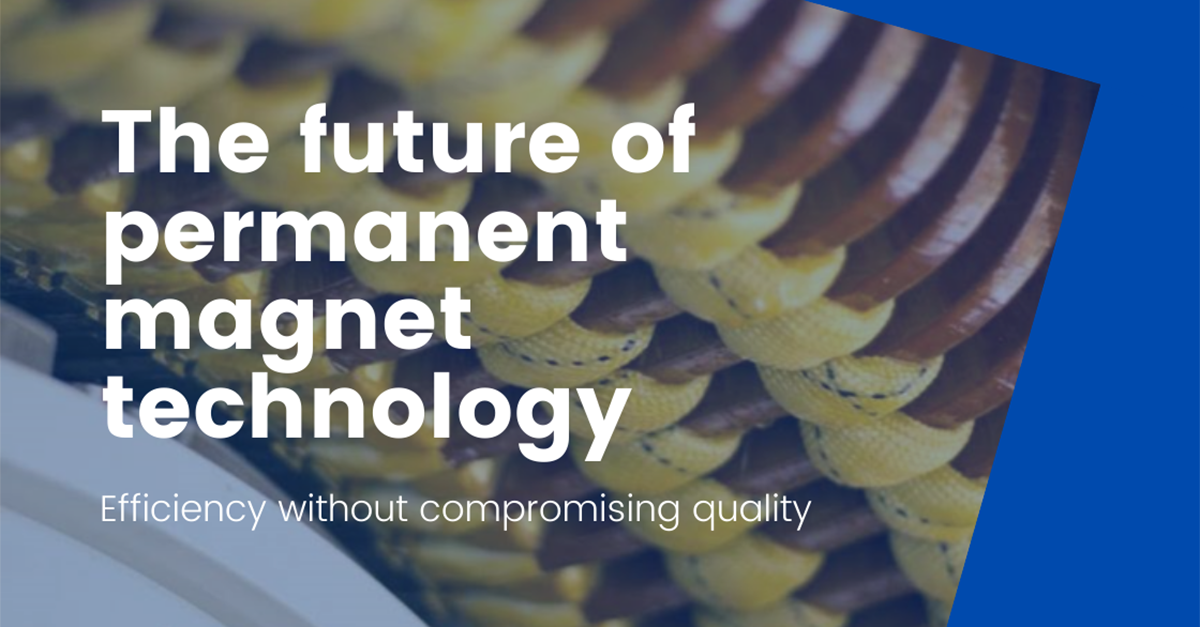Low CapEx/OpEx, high reliability and compactness. These are the three most important criteria our clients think of when considering adding electric machines to a new or upgraded vessel. But is it possible? Yes, with increasingly popular permanent magnet (PM) technology.
Traditionally, ship designers compromise with electric machines when designing a new vessel – thinking it’s not possible to combine the abovementioned criteria in a single component. Typically, they’d implement technology like electrically excited synchronous machines, sacrificing operating costs due to increased fuel costs caused by lower generator efficiency. Moreover, if they placed a premium on high reliability, they’d use ultra-low-speed induction machines, which is a simple solution yet bulky, heavy and with low efficiency and power factor.
Lowering CapEx and OpEx
Conversely, PM machines simplify construction since there’s no need for rotor windings, exciter units, rotating rectifiers or automatic voltage regulators.
The cost saving benefits are threefold. First, there’s a lower cost than conventional technologies. Second, and most important, there’s more efficient power conversion especially in low-speed applications, such as direct-drive shaft generators or propulsion motors. Plus, the main engine/auxiliary gensets burn less fuel, which is important considering that typically more than 95% of total lifetime costs for electric machines come from the fuel. And, third, PM machines require very small amount of maintenance compared to conventional machine types, further reducing lifetime costs.
Overall, PM machines offer a lower lifetime cost, especially since the initial investment cost is in the same level or lower compared to conventional technologies.
Increased reliability
Then there’s reliability. The best way to increase reliability is to use direct-drive technology (no gears) combined to a PM machine. Gears in marine power trains often feature several tooth contacts and individual bearings, presenting a greater opportunity for failure. Although not directly comparable, according to study carried out for gears used in large wind turbines, one third of their gears will face bearing failure during the first seven years. Choosing low-speed direct-drive technology eliminates gear box risks, significantly increasing the efficiency. PM machines also lack all the rotor-related components prone to failure in conventional machine types.
Saving space
Low-speed direct-drive systems, such as electrically excited synchronous machines or ultra-low-speed induction machines, are very large and heavy. Since they have significantly higher losses due to lower efficiency, to avoid overheating, their power density is always significantly lower compared to PM machines. Plus, their dimensions take up more space from the vessel’s engine room. Furthermore, electrically excited synchronous machines require an exciter unit to supply current into the rotating rotor, which increases the axial length even by one meter. According to our experience, conventional synchronous machines often take 40-50% more space, and low-speed induction machines even more. Hence, they’re not used that often.
Proven experience
We think the future is bright for PM technology. We have supplied tens of low-speed PM machines to various vessel types. Most of them have been direct-drive shaft generators, where the benefits when compared to conventional technologies are so obvious. Eventually, it seems that especially in large LPG/LNG tankers, shaft generators combined with PM technology will replace conventional solutions, where electric power is produced by using separate auxiliary gensets.
Moreover, a few major oil companies have pledged to become carbon-neutral in the near future, and using this novel technology is one part of the equation.
Obviously, the technology is taking off, and we hope you can take advantage of it.
